Many of us have seen these pictures of surfaces that the average roughness parameter, Ra, cannot distinguish between:
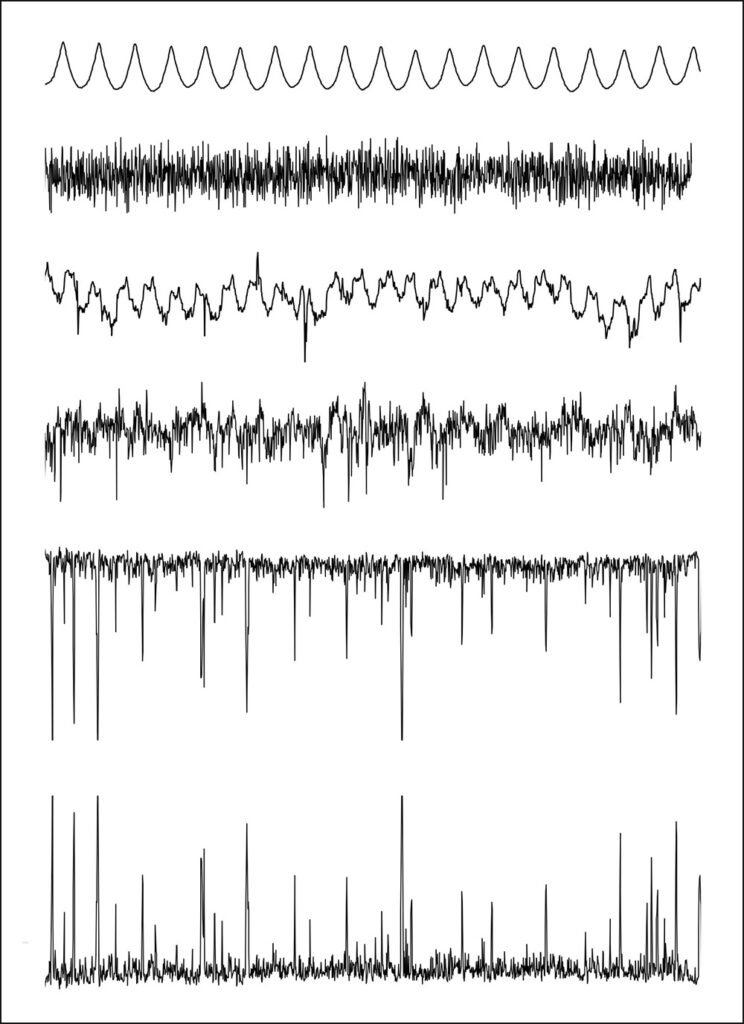
However, you may not have seen different surfaces with the same values for the entire Rk family of parameters. For these Rk parameters:

… we could have these two different surfaces:
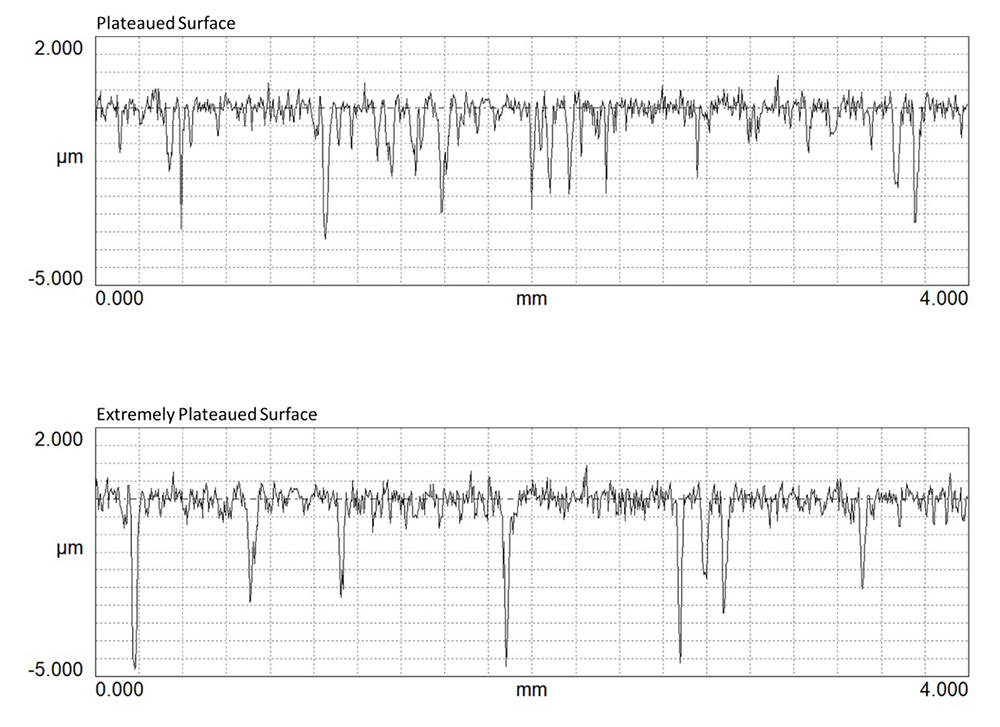
While the differences between these two surfaces may seem subtle, they are very important in many engine cylinder bore applications. The extremely plateaued surface has fewer valleys and more load carrying surface near the top. However, the Rk parameters do not detect this subtle difference.
The Rk parameters are based on detecting the “core” or “kernel” region of the material ratio curve. From this central region, triangular areas are constructed to describe the peaks and valleys. For these two surfaces, the central region of the curve and the two, green triangles are similar.
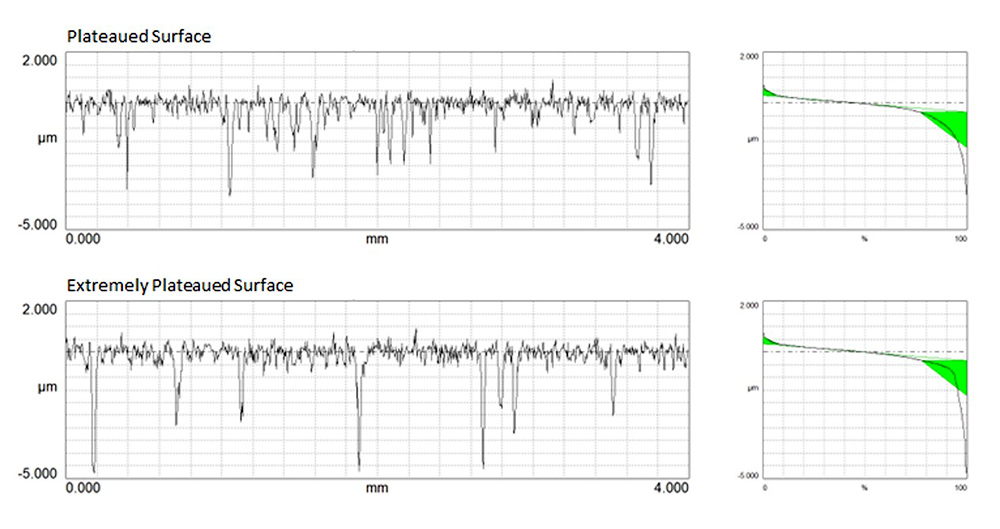
There is, however, a difference in the material ratio curve that goes unnoticed by the Rk analysis: the more extremely plateaued surface has a more pronounced “knee” in the material ratio curve. This knee indicates that the extremely plateaued surface has a more distinct change between peaks and valleys.
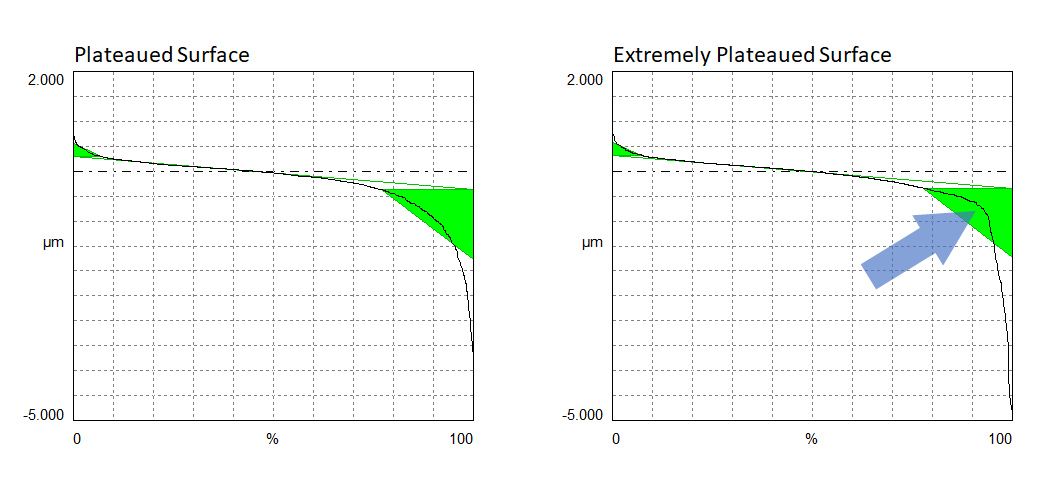
Surface texture parameters that detect the difference
When our texture parameters can’t detect surface differences, we need a better set of parameters. In this case, the material probability (Rq) family of parameters is preferred over the Rk family of parameters. The material probability parameters use statistics to separate two signatures from the surface data. This process begins by plotting the material ratio curve on a “probability graph.”
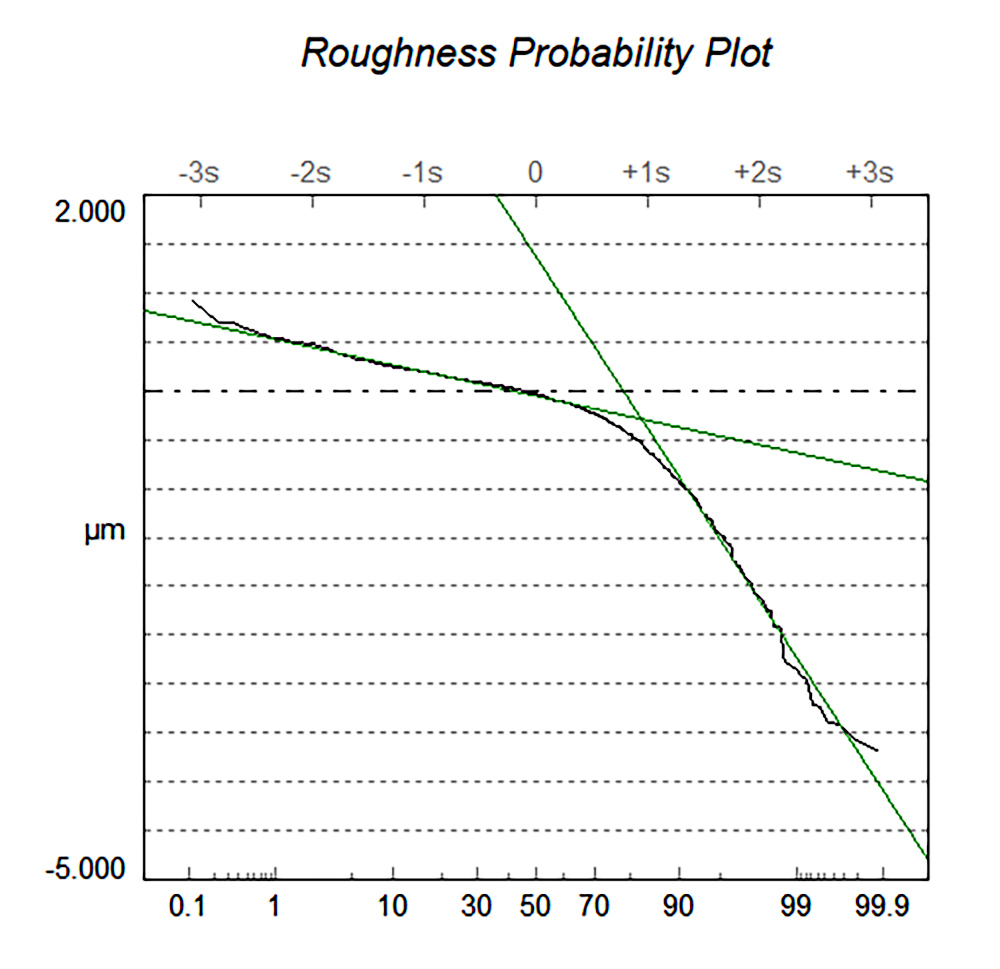
We then detect two lines:
- The slope of the upper-left green line, which represents the roughness of the peaks (Rpq).
- The slope of lower-right green line, which represents the roughness of the valley-making process (Rvq).
- The intersection, which gives the amount of material in the surface where peaks meet valleys (Rmq)
Using this approach, we see that the Rq parameters can clearly differentiate between the two textures:
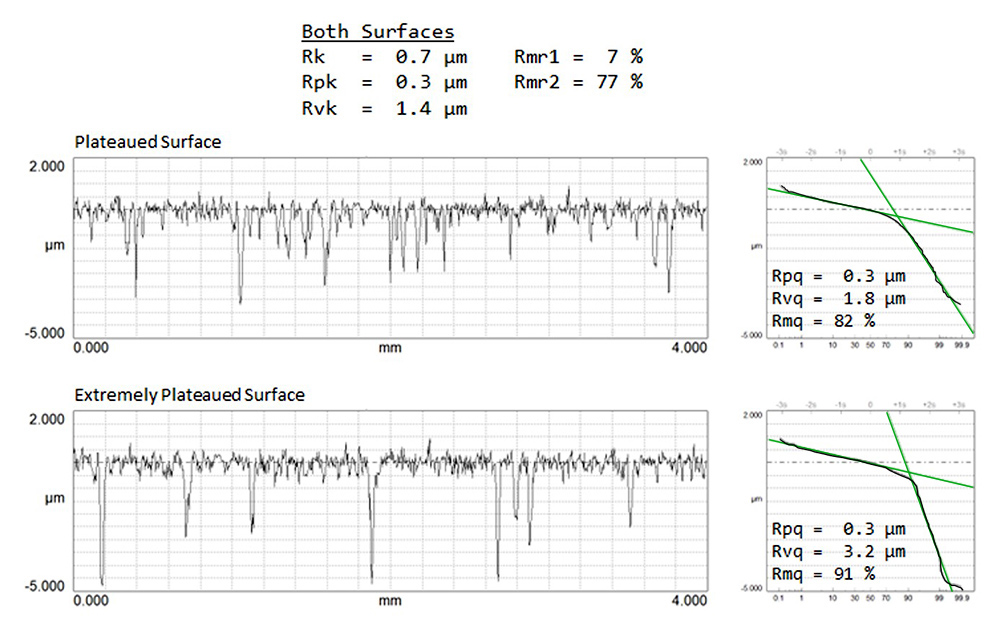
The material probability (Rq) analysis shows us a few interesting things about these surfaces:
- The peak structures are similar, with similar Rpq values of 0.3 µm.
- Rmq increased from 82% to 91%. This could relate to a more durable surface. It also relates to actually detecting the “knee” which was missed in the Rk analysis.
- Rvq increased from 1.8 µm to 3.2 µm. This likely means that a more coarse (or less dense) abrasive was used in the valley creation.
Texture software that includes the Rq parameters
Fortunately, Digital Metrology’s TraceBoss, OmniSurf, and OmniSurf3D all provide probability analysis and the Rpq, Rvq, and Rmq parameters (and the Rk parameters as well!)
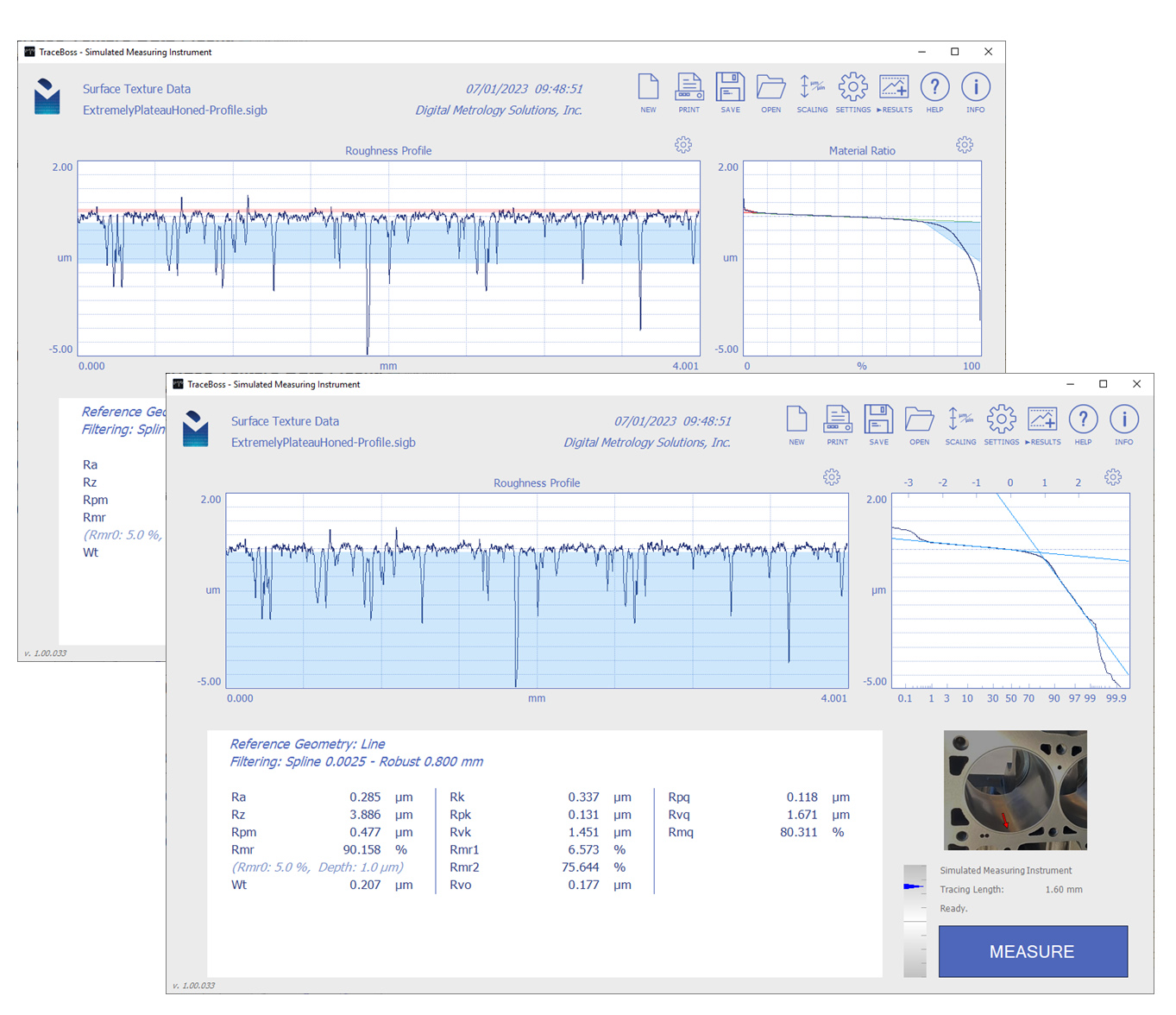
TraceBoss Screens with Rk and Rq parameters displayed
To learn more about your surface analysis, or for surface texture training related to these and other surfaces, be sure to reach out to us. We are happy to help.
